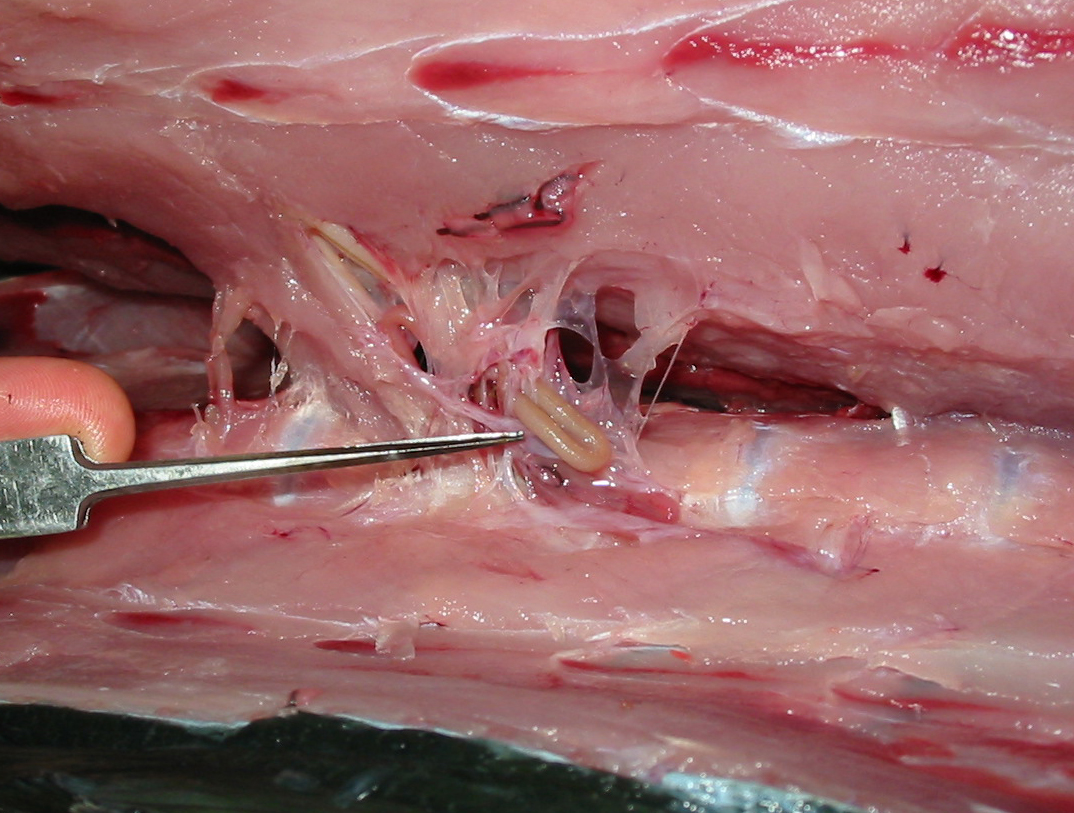
| Parasite | Philometroides seriolae |
|---|---|
| Taxonomy | Nematoda, Secernentea, Camallanida |
| Host | Yellowtail (Seriola quinqueradiata) |
| Infection site | Trunk muscle |
| Clinical signs | Infected fish exhibits no external abnormalities. The folded parasite can be observed in the muscle tissues. |
| Parasitology | The parasite (length: above 40 cm) is cylindrical (Figs. 1, 2). A male has not been found. It is ovoviviparous and a uterus occupies most space in the body. The color of body is reddish when the uterus is filled with eggs and yellowish when filled with hatched larvae. Nakajima et al. (1970) reported that the parasite protruded outside the host’s skin and the larvae would be released. The life cycle is unknown. |
| Pathology | The effects of parasite to the host fish are not clear. The infected fish loses commercial value. |
| Health hazard | Since this parasite is not infectious to human, it is harmless in food hygiene. |
| Diagnosis | Confirm the parasite in the muscle by dissection. |
| Other information | This parasite is often observed in the emaciated yellowtail after spawning in early spring. The diseased yellowtail possibly recovers if the parasite escapes from the host by summer, but no one has demonstrated this hypothesis. |
| References | Nakajima K., S. Egusa and H. Nakajima (1970):
Reproductive emergence of Philometroides
seriolae from the host. Fish Pathol.,
4, 83-86. (In Japanese) |

Fig. 1. Philometroides in the muscle of yellowtail.
(Photos by K. Ogawa (1) and O. Hasegawa (2))
Fig. 2. Immature worm of P. seriolae.